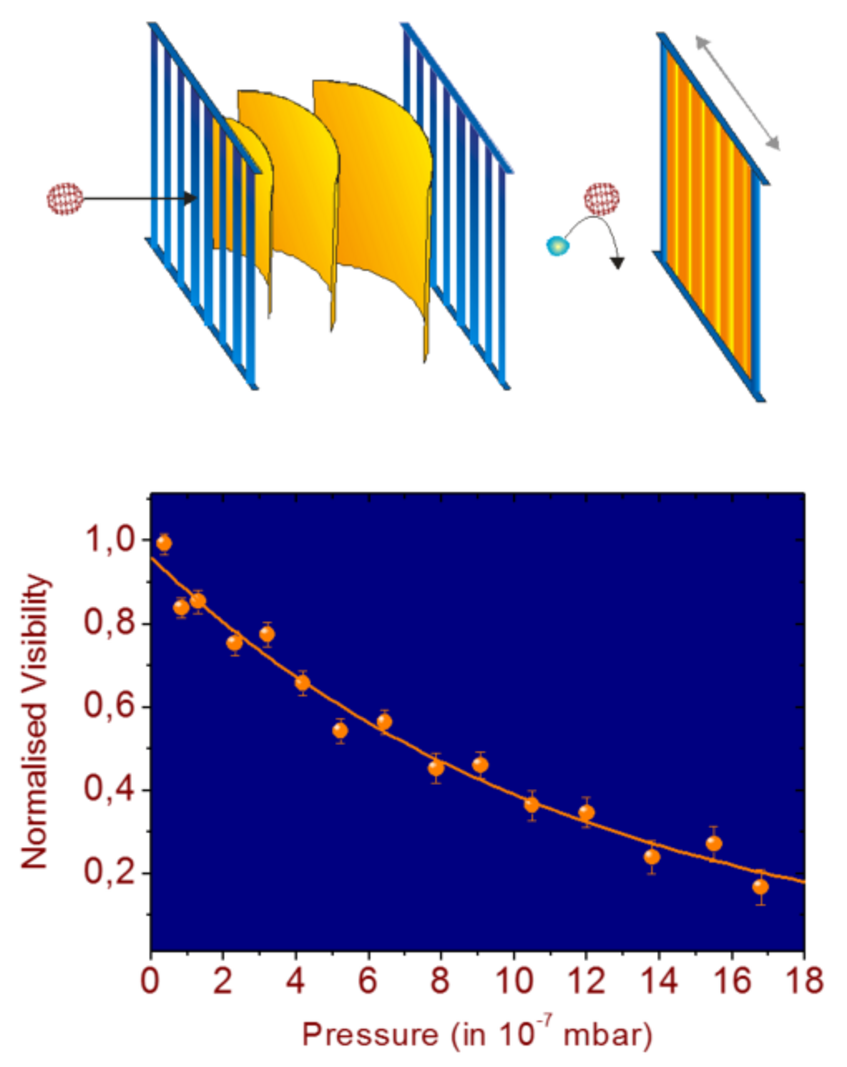Collisional decoherence

Collisional decoherence
Here we study the loss of spatial coherence in the extended wave function of fullerenes due to collisions with background gases. From the gradual suppression of quantum interference with increasing gas pressure we can confirm the predictions of decoherence theory and our picture of the interaction process. The matter-wave fringe contrast decays exponentially with increasing residual gas pressure. We explore the practical limits of matter wave interferometry at finite gas pressures and estimate the required experimental conditions for interferometry with large objects.
The vanishing of the interference contrast can be understood using three different pictures which all lead to the same quantiative prediction - in agreement with our observations:
- Bohr's complementarity holds:
Every incident gas molecule can be regarded as an ultra-short wavelength probe. If it can provide which path-information, the fringe contrast must vanish. - Heisenberg's picture holds: every collision imparts an uncontrolled recoil to the molecule. Summing over all these momentum kicks makes that the quantum fringes disappear.
- Decoherence theory holds: The photon becomes position-momentum entangled with the initially delocalized molecule. Measuring one, provides information about the other.
References
- Theory of decoherence in a matter wave Talbot-lau interferometer
K. Hornberger, J. Sipe, and M. Arndt
Physical Review A 70, 053608 (2004), DOI: 05360810.1103/PhysRevA.70.053608 - Collisional decoherence observed in matter wave interferometryK. Hornberger, S. Uttenthaler, B. Brezger, L. Hackermüller, M. Arndt & A. Zeilinger
Phys. Rev. Lett. 90, 160401 (2003). - Decoherence in a Talbot Lau interferometer: the influence of molecular scattering
Lucia Hackermüller, Klaus Hornberger, Björn Brezger, Anton Zeilinger and Markus Arndt
Appl. Phys. B 77, 781 - 787 (2003)
